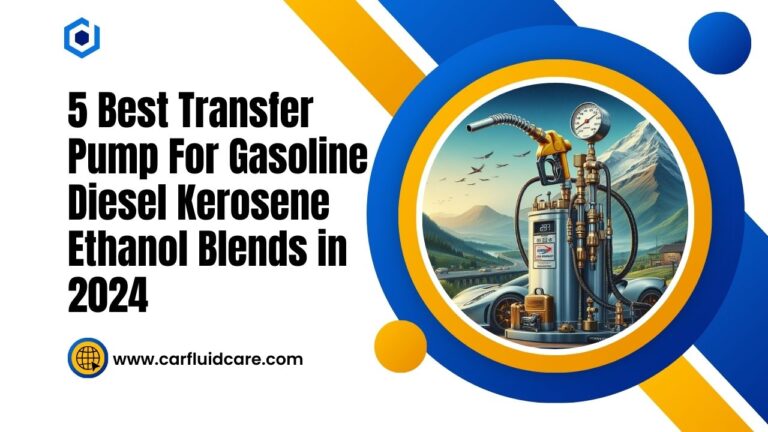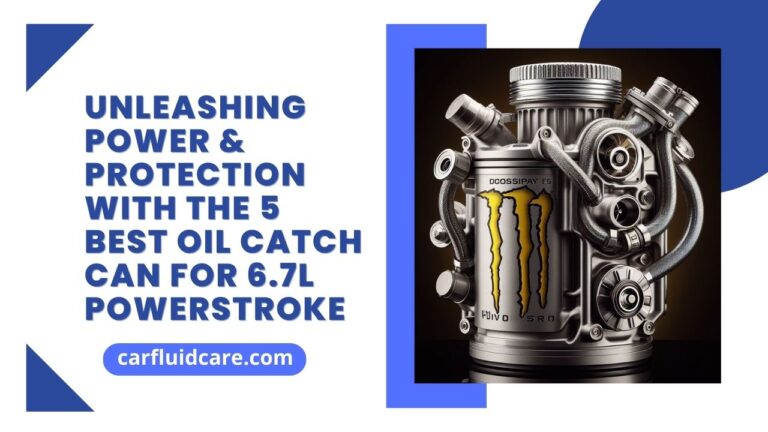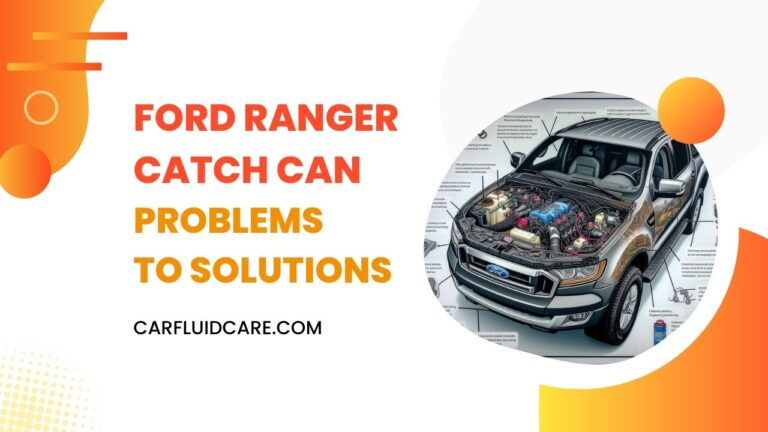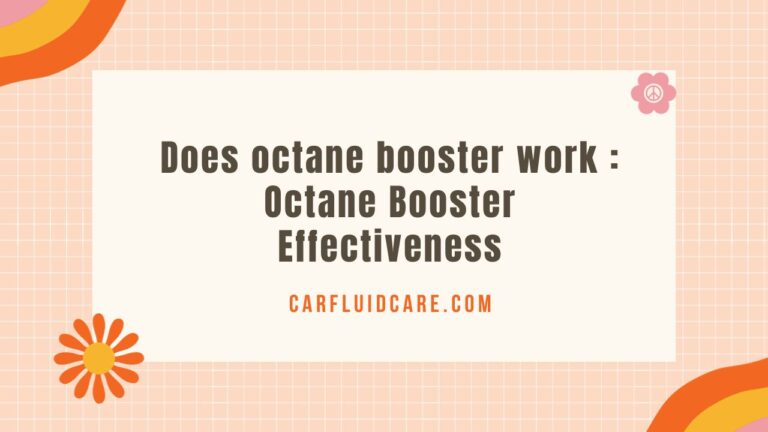Is E10 Gas The Same As 87 | Understanding Fuel Types & Octane Ratings
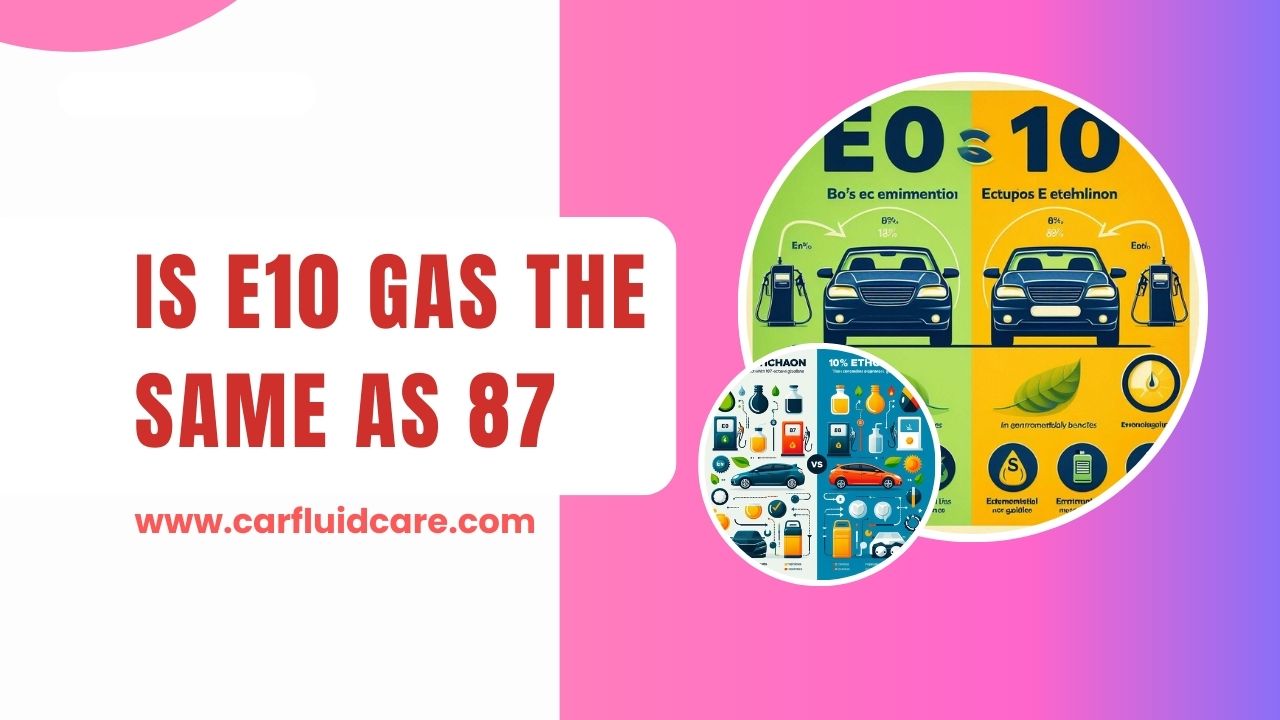
Is E10 Gas The Same As 87? You’ve pulled up to the pump, ready to fill up, but all you see are E10 and 87 octane options. This can be confusing! While E10 gas often refers to regular unleaded gasoline with 10% ethanol blended in, is it truly the same as plain 87 octane fuel? Let’s break down the key differences and help you choose the right gas for your car.
Is E10 Gas The Same As 87?
E10 gas and 87 octane gas are closely related, but not exactly the same. Here’s the breakdown:
- E10: This refers to gasoline that contains 10% ethanol, a type of alcohol fuel made from plants. It’s often the standard option for regular unleaded gas.
- 87 Octane: This indicates the fuel’s octane rating, a measure of its resistance to knocking (engine pre-ignition). Regular unleaded gas typically has an octane rating of 87.
How Is E10 Gasoline Different Than Regular Unleaded Gas?
Regular unleaded gas and E10 gasoline share many similarities, but there are a few key differences:
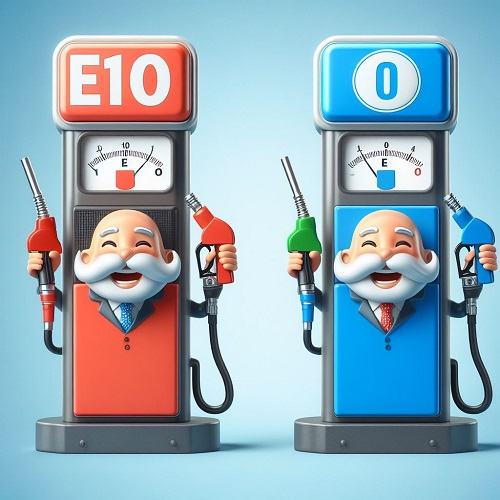
Read More About Refining Gasoline: From Crude To Car
1. Ethanol Content
- Regular Unleaded: Contains up to 5% ethanol.
- E10: Contains 10% ethanol, which is where the “E” in E10 comes from. Ethanol is a biofuel made from plants like corn or sugarcane.
2. Octane Rating
- Regular Unleaded: Typically has an octane rating of 87. Octane rating measures a fuel’s resistance to knocking (pre-ignition).
- E10: E10 gasoline can have the same octane rating (87) as regular unleaded, but it can also have slightly higher ratings depending on the specific blend.
3. Fuel Efficiency
- Regular Unleaded: May offer slightly better fuel economy due to the higher energy density of gasoline compared to ethanol.
- E10: Might result in slightly lower gas mileage because ethanol contains less energy per gallon.
4. Compatibility
- Regular Unleaded: Generally safe for most gasoline-powered vehicles.
- E10: Compatible with most modern cars, but some older vehicles (pre-2007) may not be designed for the higher ethanol content.
5. Cost
Regular Unleaded and E10: The price can vary depending on location and market conditions, but the difference is often minimal.
87 Vs 89 E10
Here’s the breakdown of 87 vs. 89 E10 gas:
| Fuel Property | 87 E10 | 89 E10 |
| Octane Rating | 87 | 89 |
| Ethanol Content | 10% | 10% |
| Price | Lower | Slightly higher |
| Environmental Impact | Better | Similar |
What Is E10 Equivalent To?
E10 isn’t directly equivalent to a single type of fuel because it focuses on the ethanol content (10%) rather than the overall octane rating. Here’s how to think about it:
- E10 itself: This refers to gasoline blended with 10% ethanol. It can have various octane ratings depending on the specific blend, but commonly it’s 87 octane.
- Regular Unleaded: Traditionally, regular unleaded gas contained up to 5% ethanol.
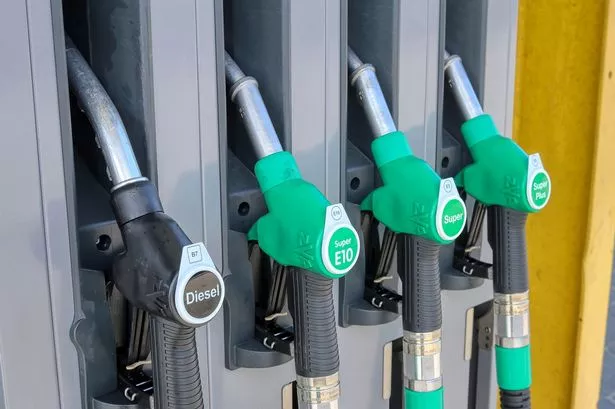
Read More About 7 Best Duramax Fuel Filter Housing Maintenance And Replacement Guide
What Is E15 Gas Equivalent?
E15 gas isn’t directly equivalent to a specific octane rating. It contains 15% ethanol, reducing energy content compared to regular gas, but often has an octane rating of 88.
Is 89 Gas E10?
Not necessarily. While most 89 octane gas stations offer E10 (10% ethanol blend), some stations may sell 89 octane with a different ethanol content or even ethanol-free.
What Is E10 Type Gas?
E10 gas is regular unleaded gasoline blended with 10% ethanol, a plant-based alcohol fuel. It’s a more eco-friendly option but might have slightly lower mileage.
Is E10 The Same As Premium Gas?
No, E10 isn’t always premium gas. E10 refers to the ethanol content (10%), while premium gas has a higher octane rating (usually 91+). Some E10 can be premium grade, but check your octane rating for the best choice.
Is E10 Same As 95?
E10 isn’t always the same as 95. E10 refers to the ethanol content (10%), while 95 indicates octane rating. E10 gasoline can be 95 octane, but it can also be lower depending on the blend.
Is E10 91 Or 95?
E10 itself isn’t guaranteed to be 91 or 95 octane. It’s usually 87 octane with 10% ethanol, but some E10 blends can reach 94 octane. Check the pump for the specific octane rating.
Is E10 Regular Gas?
E10 is often called regular gas because it’s the standard unleaded option with 10% ethanol blended in. However, some true regular unleaded gas may only have 5% ethanol. Check your owner’s manual for the recommended fuel for your car.
E85 Vs Unleaded 88
E85 and Unleaded 88 differ wildly in ethanol content. E85 is a flex-fuel option with a whopping 51-83% ethanol, ideal for specially designed vehicles.
Unleaded 88, on the other hand, is regular unleaded gas with a boost – 15% ethanol – suitable for most cars made after 2001. While Unleaded 88 might be cheaper, E85 boasts environmental benefits but delivers less mileage.
Ethanol-Free Regular Unleaded (87) Vs. E10 Premium (91)
Ethanol-free 87 boasts purer gasoline, potentially improving mileage. However, E10 Premium (91) packs a higher octane punch, ideal for performance-hungry engines.
The Different Types Of Gas At The Pump And How They Affect
At the pump, you’ll typically find three main types of gas differentiated by octane rating:
- Regular Unleaded (87 Octane): This is the most common and affordable option. It has an octane rating of 87, which means it has a medium resistance to knocking (pre-ignition) in the engine.
- Mid-Grade (Usually 89 Octane): This is a blend between regular and premium gas, often with an octane rating of 89. It offers slightly higher knock resistance than regular unleaded gas.
- Premium Unleaded (Usually 91-94 Octane): This gas boasts the highest octane rating (typically 91-94) at the pump. It’s designed for high-performance engines with higher compression ratios.
Here’s how these gas types affect your car:
- Engine Performance: Premium gas can improve performance in high-performance engines designed for it. For regular cars, the difference is negligible.
- Fuel Economy: Regular unleaded gas usually offers the best fuel economy due to its higher energy content compared to gas with ethanol blends (explained below).
- Price: Premium gas is generally the most expensive, followed by mid-grade and then regular unleaded.
Where To Buy E10 Gas
E10 is widely available throughout the USA. You’ll find it at most gas stations that sell regular unleaded gasoline. Look for pumps labeled “E10” or “Regular Unleaded.”
87 E10 Gas
87 E10 gas combines affordability (regular unleaded) with a touch of eco-friendliness (10% ethanol). It works for most cars, but check your owner’s manual for compatibility.
What Is E10 Gas Equivalent?
E10 gas is essentially regular unleaded gas (usually 87 octane) with 10% ethanol blended in, offering a slightly eco-friendly alternative.
What Octane Is E10 Gas?
E10 gas can vary, but most commonly it is 87 octane. However, it can also be offered in higher octane blends. Check your owner’s manual for the recommended octane level for your car.
Is E10 Gas The Same As 87 In Usa?
E10 gas is often 87 octane in the USA, but not always. It refers to the ethanol content (10%) not guaranteed octane level. Check your owner’s manual for the recommended octane rating for your car.
Read More About STP Fuel Injector Cleaner Review: Discover The Effectiveness, Benefits
What Is E 0 E10 Gas?
E10 gas is regular unleaded gasoline mixed with 10% ethanol, a plant-based alcohol fuel. It’s often the standard option for regular gas, offering a slightly eco-friendly alternative with a minor fuel economy trade-off.
What Is The Difference Between E10 Vs 91 Fuel?
E10 and 91 fuel differ in two key aspects: ethanol content and octane rating. Here’s a breakdown:
1. Ethanol Content
- E10: Contains 10% ethanol, a renewable biofuel made from plants like corn or sugarcane.
- 91 Fuel: Contains no ethanol, made entirely from refined petroleum.
2. Octane Rating
- E10: Can have an octane rating of 87 or higher, depending on the specific blend. 87 octane is most common, but some E10 stations might offer options with 89 or even 91 octane.
- 91 Fuel: Typically has a fixed octane rating of 91. This rating indicates the fuel’s resistance to knocking (pre-ignition) in the engine.
Here’s a table summarizing the key differences:
| Features | E10 | 91 Fuel |
| Ethanol Content | 10% | 0% |
| Octane Rating | 8791 | |
| Fuel Economy | Lower | Higher |
What Happens If You Mix 95 And E10?
Mixing 95 octane fuel and E10 (which can be 87 octane or higher) is perfectly safe for most modern vehicles. Here’s why:
- Compatibility: Both 95 octane and E10 are gasoline-based fuels. Modern cars are designed to handle a range of gasoline blends, including those with ethanol content like E10.
- Mixing Effect: When you add E10 to a tank already containing 95 octane fuel, the overall octane rating will end up somewhere between 87 (E10’s minimum octane) and 95.
Does 87 Octane Have Ethanol?
In the US, most 87 octane gas contains 10% ethanol. You might find ethanol-free 87 octane at some stations, but it’s less common.
87 Octane Non Ethanol Gas
87 octane non-ethanol gas is a type of gasoline that does not contain any ethanol, a type of alcohol. It is typically used in small engines, such as those found in lawnmowers, boats, and snowmobiles, as well as in older cars that are not compatible with ethanol-blended fuels.
Unleaded 87 Vs 88
Unleaded 88 has 15% ethanol (grain alcohol) for a higher octane rating (88) than 87 octane unleaded (10% ethanol). This can be better for the environment but check your car’s manual – some older cars don’t like it.
87 Vs 88 Octane
87 and 88 octane gas are both regular unleaded, but 88 has a bit more ethanol (15% vs 10%). It might offer slight performance gains for compatible engines and is better for some environments, but check your car’s manual first.
Unleaded E 87
Unleaded E 87 likely refers to a typo. There’s no E87 fuel grade. It might be:
- Unleaded 87 (regular gas): This has an octane rating of 87 and is suitable for most cars.
- E85 (ethanol blend): This has 51-83% ethanol and is only for flex-fuel vehicles.
E85 Vs Unleaded 88
E85 is mostly ethanol (up to 85%) for flex-fuel vehicles. Unleaded 88 is gasoline with 15% ethanol, good for newer cars (2001+). Both have higher ethanol than regular unleaded.
E85 Vs 87
E85 is mostly ethanol (85%) for flex-fuel vehicles, offering higher octane but lower gas mileage than regular 87 octane gasoline. It’s better for the environment but requires a compatible car.
E85 Vs E10 Fuel
E85 (85% ethanol) is a higher ethanol blend than E10 (10% ethanol). E85 is cheaper per gallon but reduces fuel efficiency. You need a flex-fuel vehicle to use E85.
FAQs
Is e10 gas the same as regular unleaded?
E10 gas is a type of regular unleaded gas with 10% ethanol, a biofuel, blended in. It’s mostly similar, but check your car’s manual to ensure compatibility.
What octane is e10 gas?
E10 gas can vary, but it’s most commonly 87 octane. Some stations offer E10 with higher octane ratings like 89 or even 91. Check the pump for the specific octane level.
Can you mix E10 and regular gas?
Yes, mixing E10 and regular gas is perfectly fine. They’re both gasoline, just with varying ethanol content. Use the octane rating recommended by your car’s manual.
Is E10 a flex fuel?
No, E10 isn’t a flex fuel. Flex fuels allow using a wider range of ethanol blends (like E85), while E10 is a specific 10% ethanol blend gasoline.

Conclusion
So, is E10 gas the same as 87? Not quite! E10 refers to gasoline with 10% ethanol, while 87 octane describes the fuel’s knock resistance. Most E10 is 87 octane, but it can be higher.
Ultimately, consult your owner’s manual to ensure you’re filling up with the right fuel for optimal performance and engine health. Happy driving!
